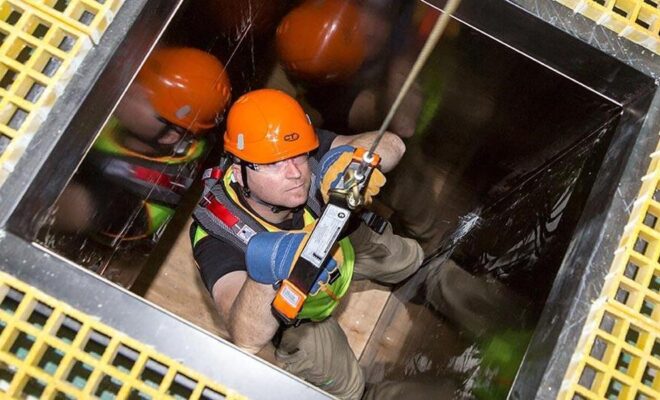
Confined spaces are enclosed or partially enclosed areas. It is not primarily designed for human occupancy but is large enough for a person to enter and perform tasks. These spaces have limited entry and exit points and may pose hazards due to their design, configuration, or contents. The characteristics of a confined space typically include the following:
- Limited entry and exit
- Not designed for continuous human occupancy
- Poor ventilation
- Potential for engulfment
- Hazardous atmosphere
Given these potential hazards, working in confined spaces requires careful planning, appropriate safety measures, and proper confined space training Melbourne to ensure the well-being of individuals entering such space.
What’s in the training?
Confined space training is a specialized form of training designed to educate workers about the hazards associated with working in confined spaces and to provide them with the knowledge and skills necessary to safely perform their duties in such environments. The training is essential for anyone who may be required to enter or work in confined spaces as part of their job responsibilities.
Here are some key aspects typically covered in confined space training:
- Hazard identification. Workers are taught how to recognize and identify various types of confined spaces, their potential hazards, and the specific risks associated with each type.
- Permit systems and procedures. Training includes an understanding of confined space entry permit systems, which outline the necessary steps and precautions to be taken before, during, and after entry into a confined space. Workers learn about the roles and responsibilities of personnel involved in the permit system.
- Atmospheric monitoring. Workers are trained to use appropriate gas detection equipment to test the air quality inside a confined space, including checking for the presence of flammable, toxic, or oxygen-deficient atmospheres. They learn how to interpret monitoring results and take necessary actions based on the readings.
- Personal protective equipment (PPE). The training covers the selection, use, and maintenance of personal protective equipment required for working in confined spaces, such as respirators, harnesses, lifelines, and lighting.
- Entry and exit procedures. Workers learn proper techniques for entering and exiting confined spaces, including the use of ladders, hoists, and other access equipment. They are also trained in emergency evacuation procedures.
- Communication and teamwork. Training emphasizes the importance of effective communication among team members working in confined spaces. Workers learn how to maintain contact with individuals outside the confined space and how to respond to emergencies.
- Emergency response. Workers are taught how to recognize and respond to emergencies that may arise while working in confined spaces, such as fire, gas leaks, or injuries. This includes rescue techniques, first aid, and the coordination of emergency services.
Confined space training is typically conducted by qualified instructors or safety professionals with expertise in confined space entry and rescue procedures. The specific content and duration of the training may vary depending on the local regulations, industry requirements, and the nature of confined spaces encountered in the workplace.



